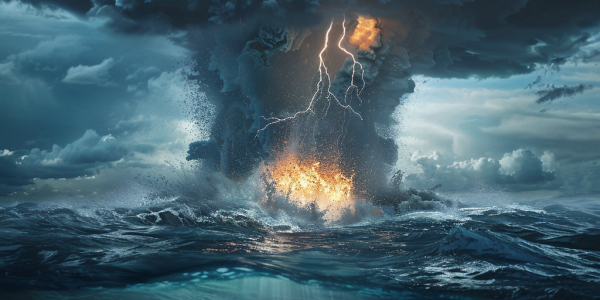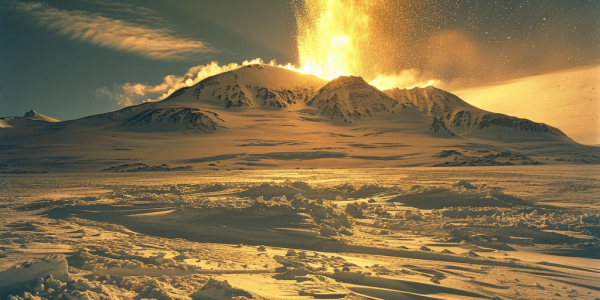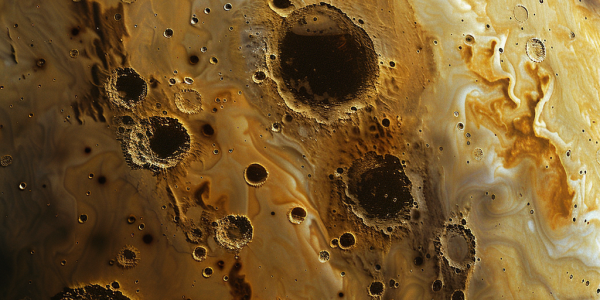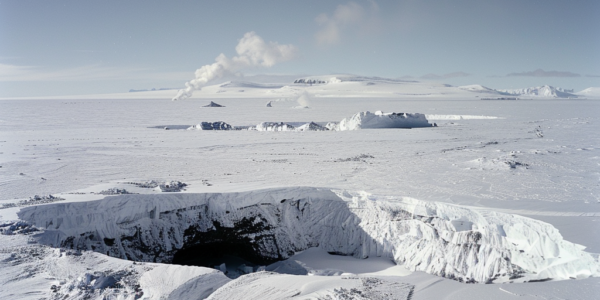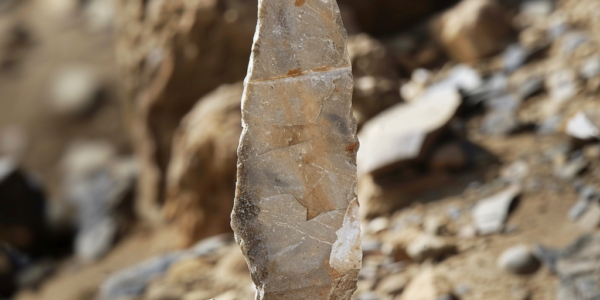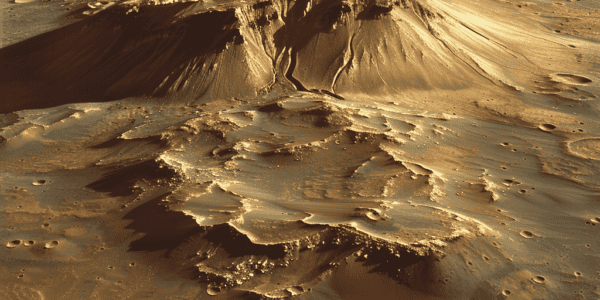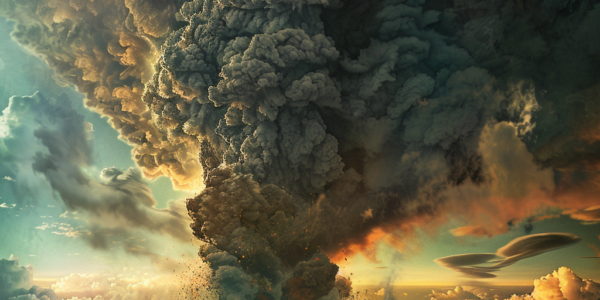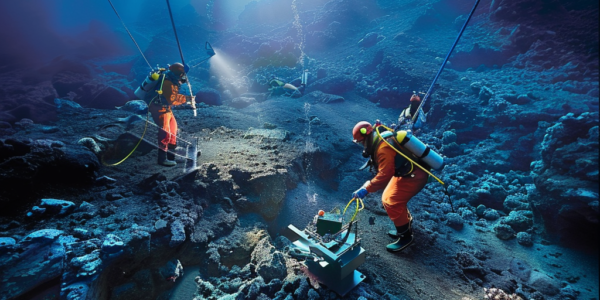Ongoing Volcanic Activity Discovered on Venus
Recent findings reveal ongoing volcanic activity on Venus, with evidence of eruptions as recent as 2.5 million years ago. The study published in Nature Astronomy highlights significant changes in Venus’ surface due to volcanic processes, challenging previous perceptions of the planet’s dormancy. This discovery opens up new avenues for exploring the geological dynamics of Earth’s neighboring planet.
Fiber Optic Gyroscope Developed to Monitor Ground Rotations in Seismically Active Area of Naples
Researchers in Naples, Italy have developed a state-of-the-art fiber optic gyroscope to monitor ground rotations caused by earthquakes in the Campi Flegrei volcanic region. This innovative technology aims to improve seismic activity understanding, enhance risk assessment, and strengthen early warning systems in densely populated areas. By capturing both linear and rotational movements during seismic events, the fiber optic gyroscope offers high-resolution, real-time monitoring capabilities. Integrating ground rotation measurements into existing sensor networks could provide valuable insights into volcanic earthquake signals, ultimately improving monitoring capabilities and risk mitigation strategies in seismically active regions.
New Theory Suggests Gas Buildup Triggered Record-Shattering Tonga Volcanic Eruption
Scientists propose a new theory on the Tonga volcanic eruption of 2022, suggesting gas buildup as the trigger instead of magma-water reaction. Recent research challenges previous beliefs, highlighting the role of gas accumulation beneath the volcano. Understanding these mechanisms is crucial for predicting and managing volcanic hazards.
Antarctic Volcano Spews Gold Dust Daily, NASA Reveals
Discover the incredible natural phenomenon in Antarctica where Mount Erebus is spitting out gold dust worth $6,000 daily. Named after the personification of darkness in Greek mythology, this active volcano emits gas pockets containing crystallized gold particles, with researchers finding gold in volcanic gases and surrounding snow. Despite the tragic event in 1979 when Air New Zealand Flight 901 crashed into its side, Mount Erebus continues to erupt, with NASA Earth Observatory reporting the gold emission reaching up to 621 miles away.
NASA’s Juno Captures Mesmerizing View of Volcanoes Erupting on Jupiter’s Moon Io
NASA’s Juno spacecraft captures mesmerizing images of volcanoes erupting on Jupiter’s moon Io, showcasing the dynamic landscape shaped by gravitational interactions. The stunning detail of Io’s surface reveals a network of active volcanoes and hot spots, providing scientists with valuable insights into the moon’s geology. Enhanced images highlight the beauty of Io’s volcanic wonderland, offering a glimpse into the complex interplay of forces within the Jupiter system.
Antarctica’s Volcanoes: What We Know
Antarctica is home to the largest volcanic region on Earth, with as many as 138 volcanoes. While most are not classified as active, Mount Erebus and Deception Island are known to be active. Mount Erebus has been continuously erupting since at least 1972, emitting plumes of gas and steam, and occasionally spewing out rock ‘bombs.’ Its persistent lava lake provides scientists with a rare opportunity to study the inner workings of a volcano in real-time.
Ancient Stone Points Unearthed in Ethiopia
Groundbreaking discovery in Ethiopia as stone points dating back 74,000 years shed light on ancient human adaptability. The archaeological site has yielded evidence of hunter-gatherer resourcefulness and ability to thrive in changing circumstances. The findings offer valuable insights into human migration and settlement, showcasing the resilience and ingenuity of our ancestors.
Giant Volcano and Possible Glacier Ice Discovered on Mars
A giant volcano and possible buried glacier ice have been discovered in the eastern part of Mars’ Tharsis volcanic province, near the planet’s equator. This groundbreaking announcement was made at the 55th Lunar and Planetary Science Conference in Texas, revealing that the giant volcano, provisionally designated “Noctis volcano,” had been hiding in plain sight for decades. The discovery of this giant volcano and potential glacier ice points to an exciting new location to study Mars’ geologic evolution through time and search for signs of life. The structure’s gigantic size and complex modification history indicate that it has been active for a very long time, from ancient through recent times. This finding opens up new possibilities for future exploration and research on Mars.
NASA’s Plans for the Next Supervolcano
NASA has proposed plans to potentially shut down a supervolcano if it shows signs of an imminent eruption. New research from NASA and Columbia University suggests that the most powerful scale of eruption would likely not cause global devastation, despite the massive amount of material it would emit into the atmosphere. The study’s lead author, Zachary McGraw, explains that the relatively modest temperature changes found in the research could explain why no single super-eruption has produced evidence of global-scale catastrophe for humans or ecosystems.
Researchers Discover Largest Volcanic Eruption in Recorded History
The largest volcanic eruption in recorded history occurred 7300 years ago off the southern coast of Japan, as a team of researchers has recently discovered. The Kikai-Akahoya eruption, originating from a submerged caldera near the Japanese island of Kyushu, ejected an astonishing amount of material, estimated at around 70 cubic kilometers, significantly surpassing the eruption of Mount Tambora in 1815. Now, Nobukazu Seama and his team from Kobe University in Japan have conducted a seismic survey to map the underwater region around the caldera, situated approximately 200 meters below the surface. Their findings have revealed that the Kikai-Akahoya eruption released over 300 cubic kilometers of material, equivalent to twice the volume of water in Lake Tahoe, a substantial increase from previous estimates. The researchers’ efforts have provided valuable insights into the magnitude of the Kikai-Akahoya eruption, shedding light on its profound impact on the surrounding environment and human populations.



